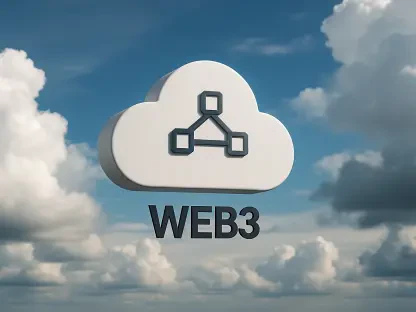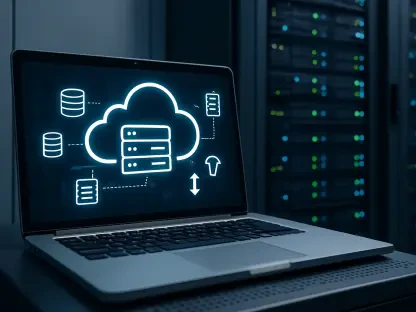As the business landscape becomes increasingly competitive and technology-driven, a new revolution is reshaping the Software as a Service (SaaS) sector, aptly referred to as SaaS 2.0. This next phase in SaaS evolution promises transformative change fueled by the integration of advanced technologies like Artificial Intelligence (AI), leading many companies to revisit how they source and evaluate software solutions. As the stakes have never been higher, SaaS 2.0 is poised to offer not only operational efficiency but also a wealth of innovative solutions that closely align with an organization’s strategic goals. The transition from traditional SaaS models to this advanced version demands a deeper understanding of both the opportunities and challenges that lie ahead for enterprises.
The Evolution of SaaS: From Foundations to Challenges
The core concept of SaaS relies on delivering software through a centralized model, allowing multiple clients to access a single version without extensive infrastructure requirements. This simplicity translates into cost savings and streamlined support structures for businesses, balancing the trifecta of platform, infrastructure, and service management. The industry has touted these efficiencies since the inception of SaaS, with minimal customization needs ensuring that costly technical debts and upgrades are averted. However, the progressions made during the initial phases of SaaS have not been devoid of challenges, prompting an examination of SaaS 1.0’s pitfalls.
This early version of SaaS brought benefits but also highlighted significant gaps that called for attention. The lack of matured market regulations frequently led to difficulties in vendor switches due to high IT costs and disruptions. Moreover, traditional legacy service models and vendors weak in delivering efficient services beyond technical support became a barrier to maximizing platform benefits. This was coupled with vendors’ reluctance to assume full accountability for their offerings, leaving buyers with unfulfilled expectations. As customers demanded more tailored solutions and comprehensive support, these early challenges laid the groundwork for the enhanced alternative that SaaS 2.0 represents.
Cost Dynamics and Pricing Challenges
In addition to service-related difficulties, pricing and cost structures posed significant concerns within the SaaS 1.0 framework. Clients often encountered rigid pricing models that failed to accommodate varying levels of scalability, a notable dissonance from the expected benefits that SaaS should have offered. Non-elastic pricing strategies forced buyers into subscription commitments that did not align with the economies of scale typically associated with SaaS. As the technology matured, high price premiums by dominant vendors meant that perceived advantages did not necessarily translate into genuine cost efficiencies or savings for end users.
The evolution into SaaS 2.0 sought to address these cost constraints by aligning pricing models more closely with technology innovations and business outcomes. With the introduction of AI-driven features, potential operational efficiencies have piqued interest, yet the tangible benefits of these innovations have not always been reflected in pricing. Several vendors have still struggled to deliver the anticipated cost reductions, leaving buyers to critically evaluate the value propositions against financial commitments. This ongoing tension within pricing structures underscores the need for transparent, flexible models that better serve the transformative potential SaaS 2.0 encompasses.
Embracing AI and Innovation in SaaS 2.0
Central to the SaaS 2.0 revolution is the integration of AI capabilities, heralding a shift towards ‘Service as Software’. This evolution marks a departure from traditional offerings, where AI innovations are poised to become major differentiators in vendor competition. Companies successful in leveraging Agentic AI can offer considerable advantages, enabling automation of routine tasks and providing significant operational gains. These enhancements readily translate into service reliability and the potential for operational excellence, thus redefining the customer experience. However, embracing AI-driven solutions requires vendors to foster a culture of continuous innovation, which becomes crucial in maintaining market relevance.
As vendors continue to innovate, AI offers a channel to generate real-time insights and predictive analytics, allowing businesses to preemptively address issues rather than respond reactively. The broader implications include reshaping supply chains through self-diagnosing and self-healing capabilities. This user-centric approach presents a strategic shift, reducing dependency on specialized resources and, in turn, benefiting both vendors and users. SaaS 2.0 not only promises a streamlined workflow but also positions itself as a cornerstone for enhanced customer outcomes. However, these advancements require robust validation processes and agile adaptation to harness the true potential they can offer for clients.
Navigating Sourcing and Procurement Complexities
For organizations keen on partaking in the SaaS 2.0 revolution, approaching sourcing and procurement with an evolved strategy is paramount. The emerging pricing structures tied to specific business outcomes introduce complexity that can inadvertently inflate costs. Niche SaaS offerings with substantial return on investment (ROI) potential can disrupt established platforms, necessitating a comprehensive evaluation of the portfolio. While operational savings are enticing, they may not always revert directly to clients, with benefits potentially redistributed among alternative service providers.
The effective navigation of sourcing complexities in the SaaS 2.0 landscape demands thorough due diligence and assessment of a vendor’s commitment to ongoing innovation. Clients must approach vendor partnerships critically, ensuring compatibility between burgeoning AI capabilities and organizational needs. Establishing commitments to continuous innovation as part of long-term pricing agreements is vital to safeguard against obsolescence. As stakeholders traverse this dynamic marketplace, there is a growing emphasis on aligning procurement strategies with the overarching technological trajectory, ensuring robust adaptability to these future advancements.
The Path Forward in the SaaS 2.0 Revolution
SaaS, short for Software as a Service, is built on the principle of delivering software through a centralized model, enabling numerous clients to access a single version without needing a complex infrastructure. Such simplicity leads to cost savings and streamlined support for businesses, balancing between platform management, infrastructure handling, and service administration. Since its introduction, the SaaS industry has emphasized these efficiencies, as minimal customization reduces expensive technical debts and necessary upgrades. Nonetheless, the initial stages of SaaS weren’t without issues, leading to an assessment of SaaS 1.0’s shortcomings.
While early SaaS offered advantages, it also revealed significant flaws that needed addressing. A lack of mature market regulations often made switching vendors pricey and disruptive due to high IT expenses. Legacy service models struggled beyond basic technical support, hindering full platform potential. This was compounded by vendors often avoiding complete responsibility for their products, leaving customers dissatisfied. As clients demanded more personalized solutions and holistic support, these initial challenges set the stage for the improvements found in SaaS 2.0.









